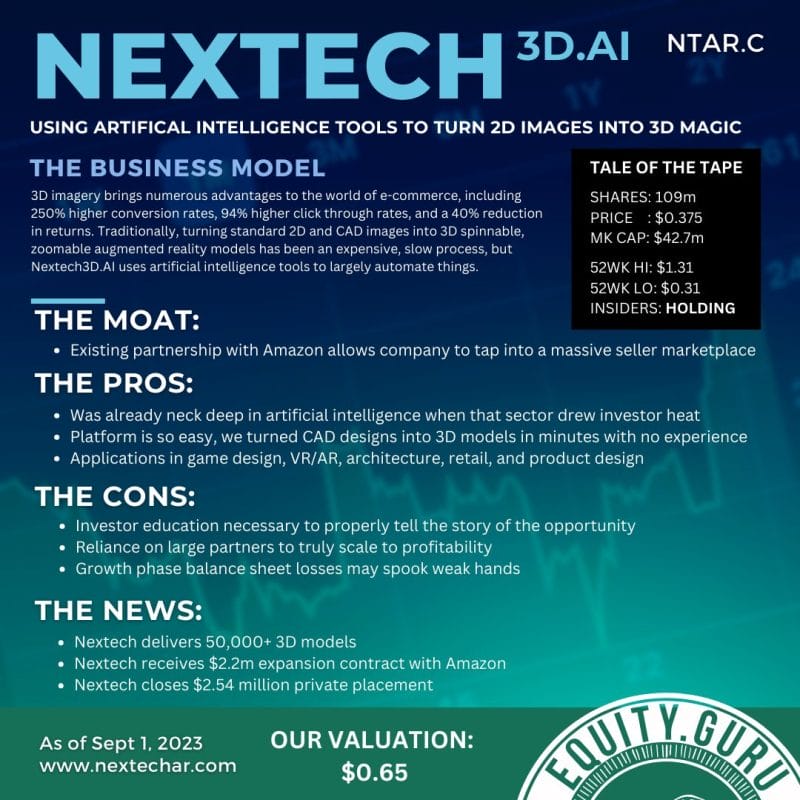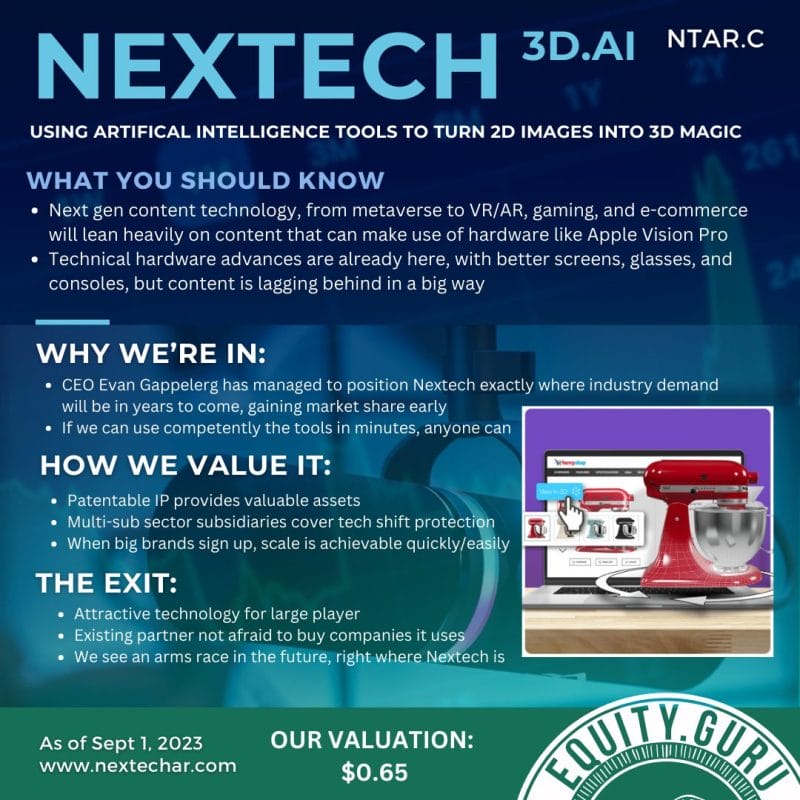E-commerce, with its convenience and extensive product range, has rapidly grown, but replicating the in-store experience remained a challenge. This limitation, however, is being mitigated by the integration of 3D imaging technology.
Defining 3D Rendering
3D Rendering is the creation of a two-dimensional digital image from a three-dimensional computer-generated model. Through complex calculations and algorithms, it simulates light, shadows, textures, and materials, producing realistic, lifelike images. Initially prevalent in industries like architecture and video games, 3D Rendering has gained prominence in e-commerce and online retail. 3D imaging is a burgeoning market with near term blue sky growth potential. The global 3D imaging market size was estimated at USD $15.5 billion in 2020 and is expected to grow to USD $41.0 billion by 2025 at a CAGR of 21.5% during that period. So what is behind this growth?
Revolutionizing Online Shopping Experience
3D imaging enables retailers to offer customers interactive 3D graphical representations of products, allowing users to view objects from different angles, zoom in, rotate, and observe motion. This interactivity significantly enhances the online shopping experience and aligns with consumers’ desires to study a product thoroughly before purchase.
Increasing Engagement and Conversion Rates
Studies show that interactive 3D representations are favored by 95% of respondents over video playback, and 82% of visitors to a product page activate the 3D view. This preference for 3D product imaging is driving an increase in key metrics like conversion rates. For instance, luxury goods department stores and designer brands reported almost a 40% increase in conversion rates for products with 3D images. This level of customer engagement indicates that 3D technology is an innovative differentiator in the competitive retail market.
Virtual Showrooms and Augmented Reality Integration
Beyond product visualization, 3D Rendering powers virtual showrooms, offering an immersive experience as customers virtually explore stores and visualize products in their space. This is particularly beneficial for furniture and home décor shopping, reducing the need for physical store visits and likelihood of returns due to size or fit issues.
Furthermore, 3D Rendering is integral to augmented reality (AR), overlaying digital images onto the real world and enabling users to place virtual products in their environment, thus enhancing shopping experiences and reducing returns.
Overcoming Challenges in 3D Imaging
Initially, 3D rendering was prohibitively expensive and required great technical expertise, however the technology continues to become more accessible, upfront costs continue to decrease, and the necessary skills have become far more pedestrian, allowing brands to incorporate 3D content with AR/VR devices and visualize a vast array of products, including those with complex textures and shapes.
Diverse Applications and Visualization of All Products
From clothes and accessories to intricate items like jewelry, the scope for 3D visualization is limitless. Even features on products such as greeting cards, including glitter and foil, can be appreciated, enhancing the online representation of such items.
Streamlined Product Development and Competitive Advantage
3D Rendering streamlines product development, allowing for virtual prototypes and identifying potential issues before physical production. This not only saves time and resources but also offers a competitive edge, demonstrating commitment to innovation and customer satisfaction.
Data-Driven Insights and Analytics
Retailers are harnessing AI analytics tools to track customer interactions with 3D images on websites. These tools present valuable metrics through heat maps, showing customer interest, dwell time, and optimal angles for product positioning. The insights obtained enable retailers to refine content visualization, product design, color combinations, and highlight bestsellers, thus boosting sales.
Enhancing Physical Stores and Omnichannel Experiences
3D imaging is not confined to e-commerce; it’s also revitalizing brick-and-mortar stores. Integration with advanced technology is exemplified by retail giants experimenting with virtual reality and artificial intelligence. Furthermore, the development of software for interactive kiosks allows customers to interact with goods in physical stores, enriching the shopping experience across online and offline platforms.
Long-Lasting Trend and Multigenerational Appeal
3D modeling solutions are proving to be a sustainable trend, with high preference rates among consumers. They cater to the demands of multigenerational groups seeking customized experiences and facilitate relationship-building with customers, thereby increasing product loyalty.
Benefits and Business Performance
Retailers and customers stand to gain significantly from 3D products. The technology enables informed purchasing decisions, reaches wider audiences, and has led to a 20%-40% increase in revenue and conversion rates. Retailers also plan to invest more in next-generation product imagery, expecting benefits such as increased purchase conversion rates, optimized promotions, reduced costs, and lower product return rates.
Leading the Charge
One company driving on the front edge of this technological revolution is Nextech3D.ai (NTAR.C), a diversified augmented reality firm. Led by CEO, Evan Gappelberg, Nextech spun out some intriguing ventures, Toggle3D.ai and ARWay.ai, on top of its own groundbreaking 3D imaging services, ARitize3D and mapD. The company leverages proprietary artificial intelligence to create 3D experiences. Nextech’s main business is creating 3D WebAR models for the Prime Ecommerce Marketplace on top of other retailers.
The Toronto, Ontario-based firm, is a start-up for sure and general adoption of 3D imaging is yet to arrive, but having a sizable deal with Amazon, puts it in good stead for the time being and sets up the potential of carving a larger slice of the pie as the world moves forward. The proprietary generative AI employed by Nextech also adds value, moating its position in the market. See a deeper analysis below:


Conclusion
3D imaging is a transformative technology reshaping the landscape of e-commerce and manufacturing. By enhancing the online shopping experience, providing valuable data-driven insights, and bridging the gap between online and physical stores, 3D imaging is set to remain a pivotal element in global markets. Retailers and manufacturers adopting this technology will likely stay ahead of the competition and meet the evolving demands of consumers. Companies like Nextech3D.ai present an interesting opportunity for investors to capitalize on that ride.







